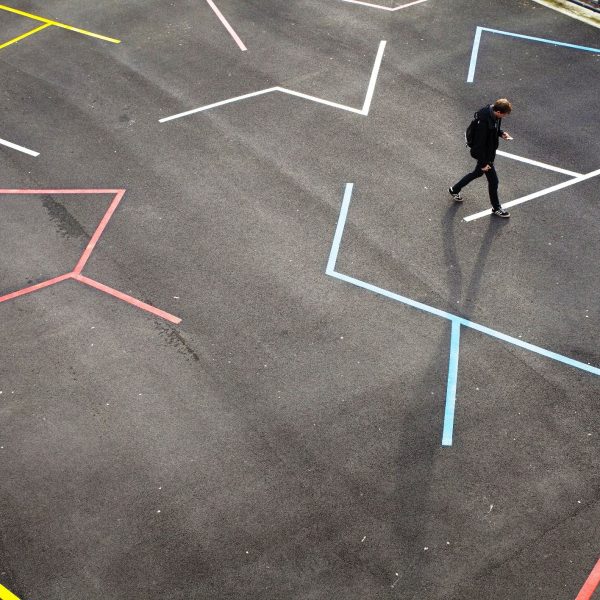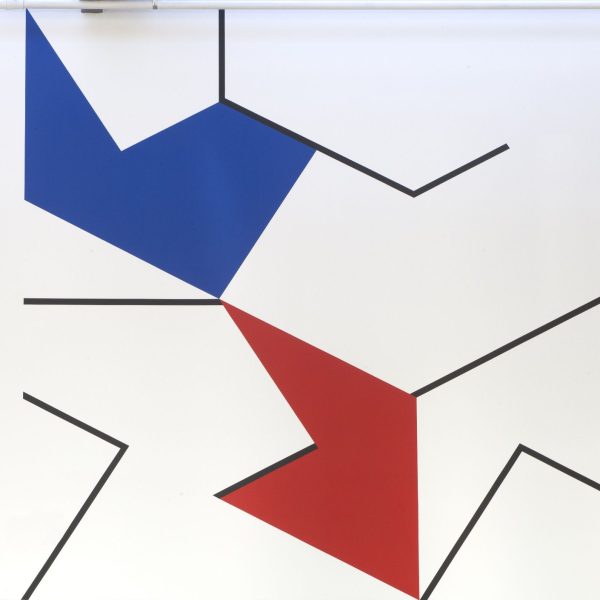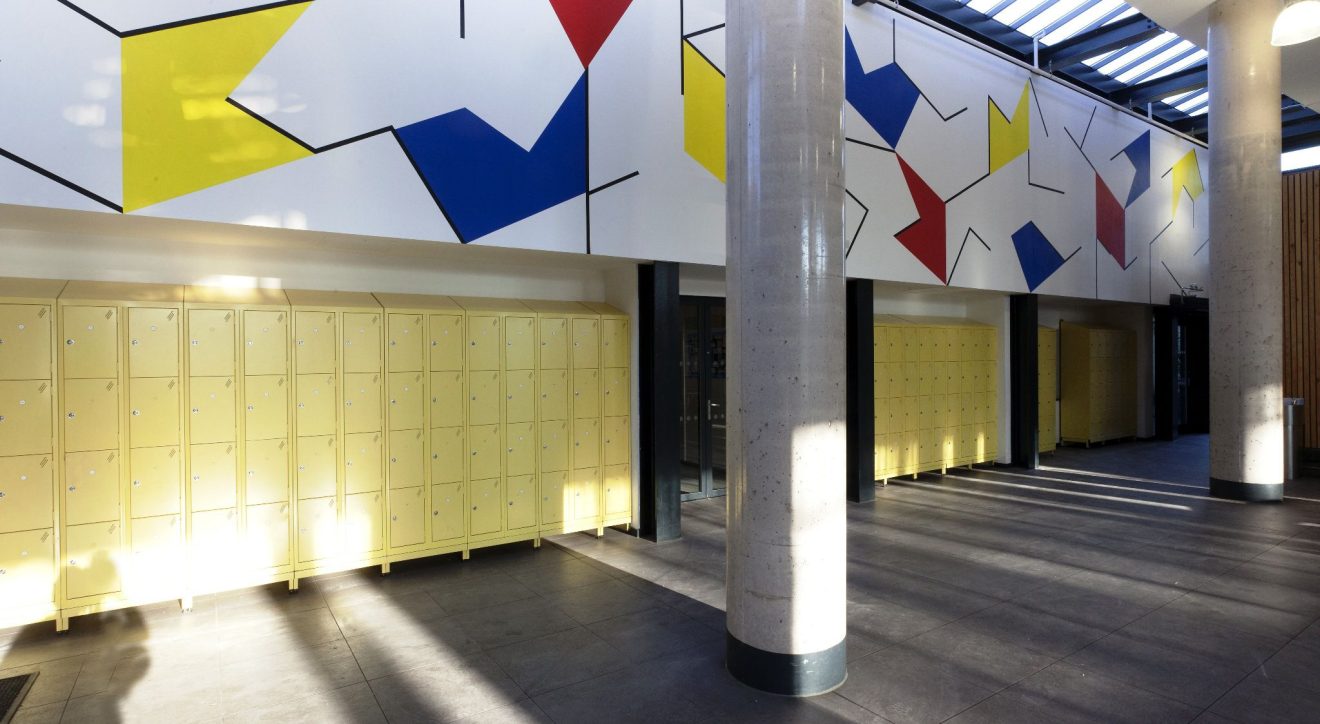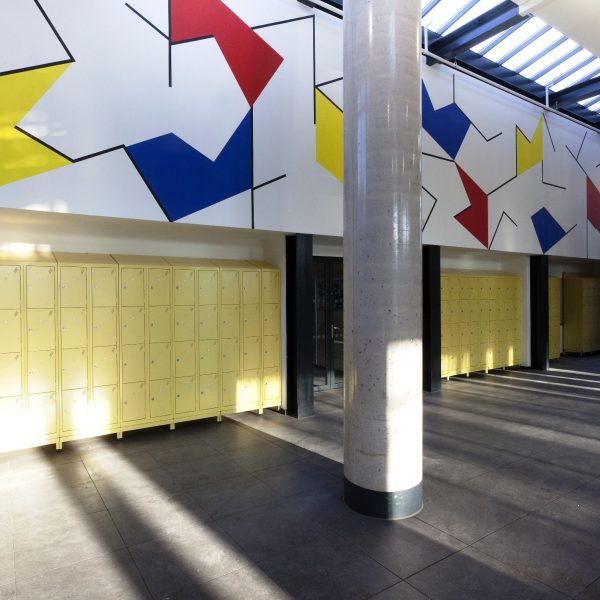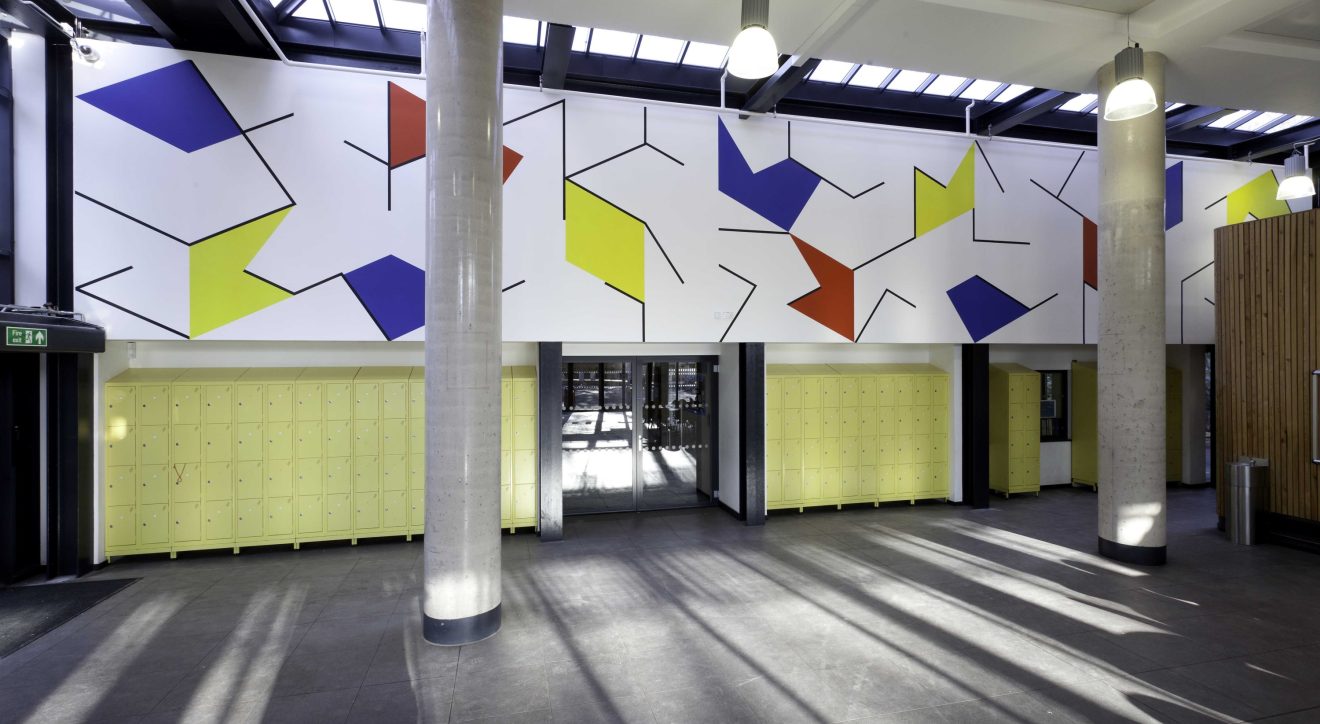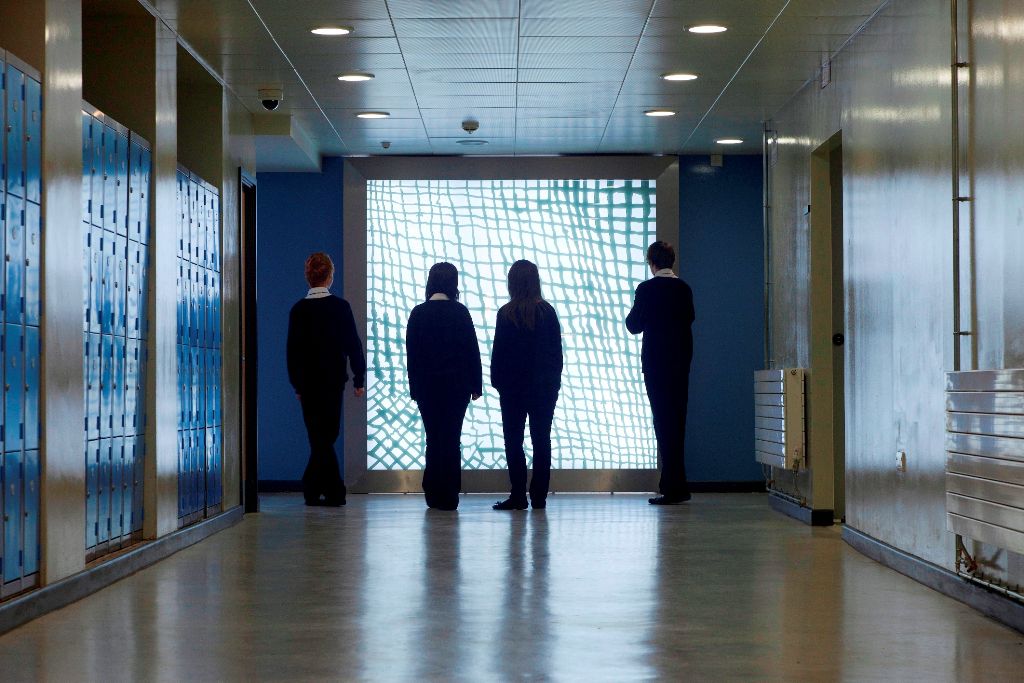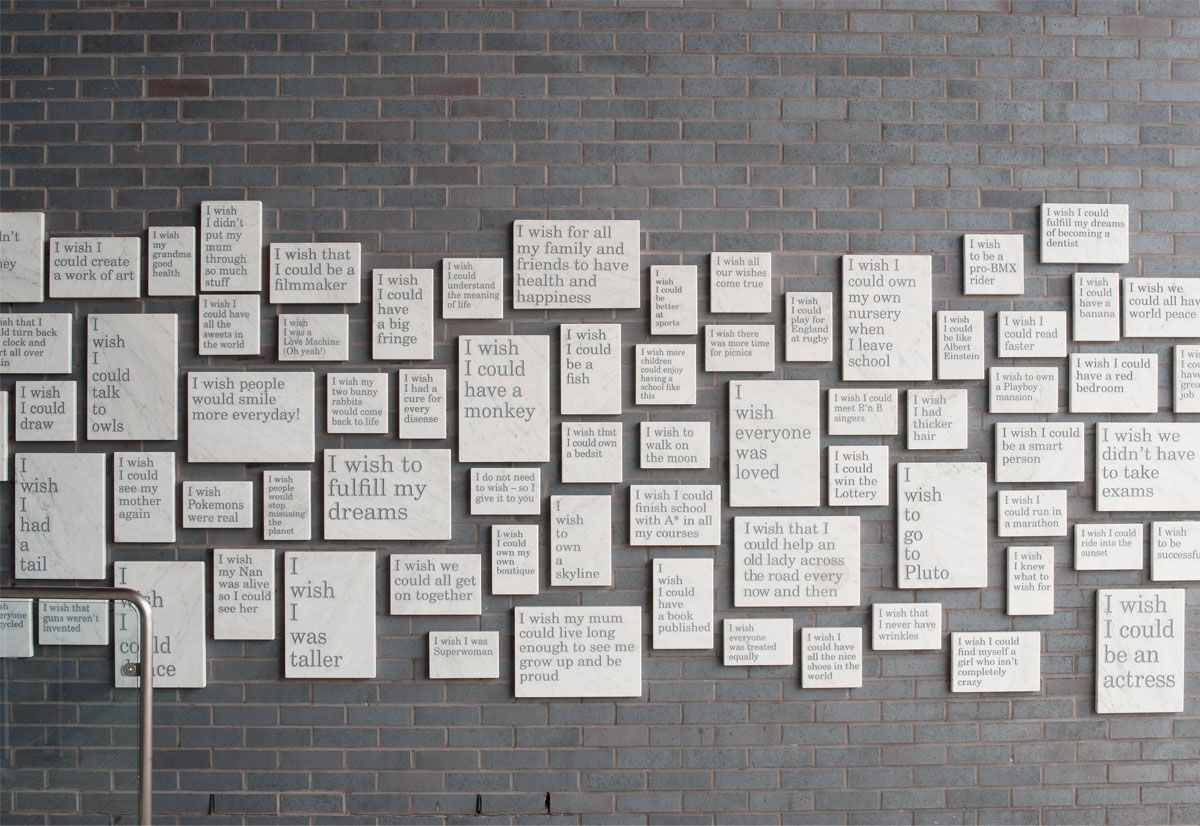
Synopsis
Bristol City Council is currently in the process of completing a number of new schools in the City under the Building Schools for the Future (BSF) programme. Included in this series is Cotham School, a successful secondary and sixth form school founded in 1920 and located a few miles from the centre of Bristol.
As part of the development Bristol City Council commissioned artist Simon and Tom Bloor to create a new artwork for the school building, working closely with the school development team, comprising the school head, staff, pupils, contractor, project architect and other stakeholders.
Play has been a key area of interest for the artists over the last few years, in particular the notion of play as a truly free form of expression without the (relative) barriers of rules and regulations.

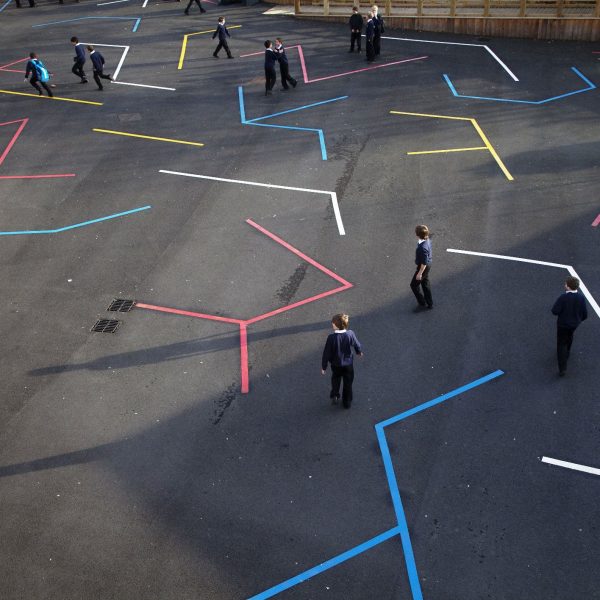
Simon & Tom Bloor
For Cotham School we have developed two separate but related works, Formula for living (linear composition) and Formula for living (spatial composition), each of which is an attempt to play with the physical space of the new school development.
Formula for living (linear composition) is a work for the school’s expansive tarmacked yard/playground/entrance court area. The work is derived from a grid pattern we have used throughout our practice and has been made with the type of thermoplastic material used for road markings, playgrounds and sports courts. We looked at the yard as an opportunity to experiment and to engage with a space that resonates with wider interest in our current practice. We considered the area as a social space on the edge of the more controlled school interior–the yard or playground as a sort of hinterland where some anarchy is still potentially permissible. We wanted to create an artwork with an opportunity for some form of potential use, but where a function is still to be realised and can change depending on the user’s needs and desires. In response to the school’s specialisms in Mathematics and Performing Arts we made an abstract design that might look like a lost mathematical language, architectural ground plan or futuristic playground game and that could encourage users to act in a playful way as they navigate the space. The work’s linear pattern creates corridors and enclosed zones, offering new ways to navigate the yard and small areas for individual and group activity.
After navigating Formula for living (linear composition) school visitors enter the interior Hub space to find our second work, Formula for living (spatial composition). When we first visited the school the large wall in the central ‘Hub’ space cried out as a prime location for an artwork, in part due to it’s physical presence and more symbolically as it overlooks the social space of the Hub and sits at the entrance to the library, a space loaded with all sorts of potential knowledge. The design is derived from the same grid pattern as the yard work and is designed to create a sense of dynamic, shifting, three dimensional space with a two dimensional wall painting. The work is in part a take on Modernist era murals for similar public spaces such as Theo van Doesburg’s Café Aubette interiors or Victor Pasmore’s Kingston upon Thames Bus Canteen design. Our past artworks have often looked to the Modernist period artists who worked across disciplines and would make a mural for a municipal building as readily as a painting or sculpture for a gallery, but these are ideas we’ve tended to use as a point of reference and with a degree of critical approach. This project offered us a chance experiment with how our practice can engage with public space and address such histories whilst still remaining critical and rigorous.
We hope that both of our works for Cotham School will provide a playful and engaging backdrop to the serious business of learning the school provides.

Artists Bio
Simon & Tom Bloor were born in Birmingham in 1973. They live and work in Birmingham and London and are amongst the founding directors of Eastside Projects, Birmingham. Solo exhibitions include Happy Habitat Revisited, South London Gallery (2011), The Fascination of Islands, Cooper Gallery DJCAD, Dundee (2011), Hit & Miss, Modern Art Oxford (2010), Hey for Lubberland, Ikon, Birmingham (2009), As long as it lasts, Eastside Projects, Birmingham (2009), Kiosk7: OudWestKiosk, SMART Project Space, Amsterdam (with Gavin Wade, 2007), Modes of Civic Life, Transmission Gallery, Glasgow (2007) and Various Positions, Het Wide Weten, Rotterdam (2006). Group exhibitions include Locws International, Swansea (2011) Fifteen, S1 Artspace, Sheffield (2010), Oneirography, Green on Red Gallery, Dublin (2010), Euphorbia Serrata, Sils, Rotterdam (2010), Extra Extra, China Art Objects, Los Angeles (2009), Lobby, Cell Project Space, London (2009), 100 Years, 100 Artists, 100 Works of Art, A Foundation Rochelle School, London (2008), Folkestone Triennial (with Nils Norman & Gavin Wade) (2008), Thin Cities, Platform for Art, London (2007), Romantic Detachment, Grizedale Arts/PS1 MoMa, New York (2004)
Cotham School
Cotham School is a secondary school and sixth form for boys and girls. The age range of the pupils is 11-19. It has occupied its site within a mile of Bristol city centre since 1920. The main school was built in 1931, with substantial additions in the 1960s and 1970s. Originally a boys’ school, it became co-educational in 1973 and comprehensive in 1999. A new sport hall and drama facilities are opened in October 2006. The school has Performing Arts Status and is a vibrant and creative learning community. The school’s performing arts department offers key stage three, GCSE and A Level courses in music, dance and drama. The school organises an exceptional number of trips, excursion and educational visits. It has a wide range of sporting activities including rugby, football, cross-country, athletics, cricket, basketball, tennis, swimming, badminton, hockey, aerobics, volleyball and rounders. The school aims to provide a safe and calm environment in which young people of all abilities and backgrounds can learn, work, play and grow up together and taking responsibility for their own learning and treating everyone with courtesy and respects. It provides a broad, balanced education and the curriculum has been designed to ensure that all its students have the opportunity to achieve their maximum potential.

